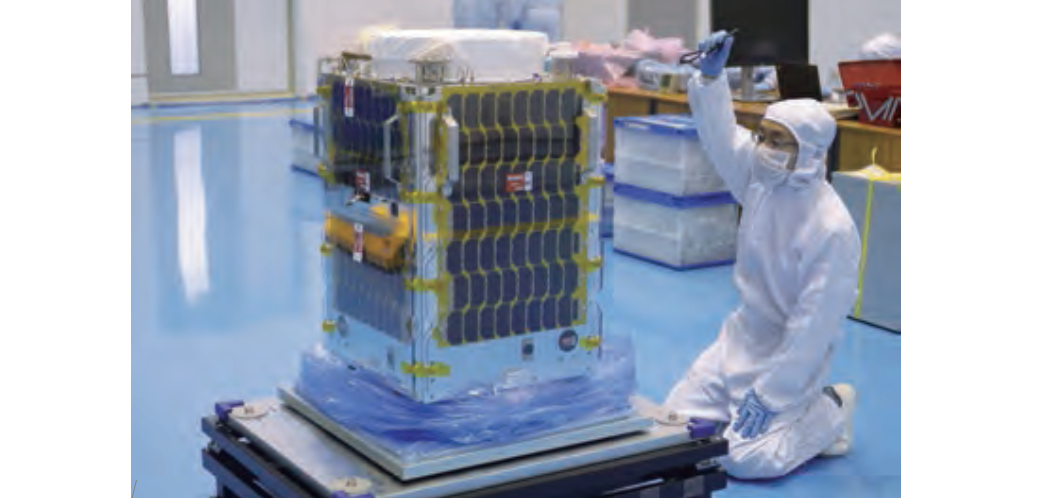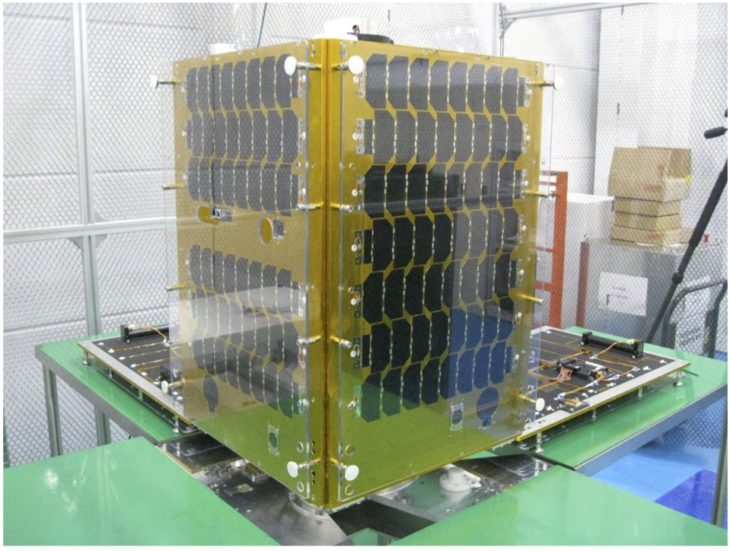Did you know that Canon has already been in orbit and is not going to stop there? On the occasion of Cosmonautics Day, we will tell the story of space exploration by the company.

57 years ago, the dreams of all science fiction writers suddenly became a reality - the first manned flight into space opened the era of cosmonautics. At first it was like a child’s timid steps: each start was unique in purpose and technical implementation. But in recent years, the development of space technology goes into an exponential phase. Reusable launch vehicles become a reality, the number of satellites is in the thousands, and the continuous human presence in space exceeds 14 months. We believe that very soon we will be able to read about the exploration of other planets not only in fantastic stories, but also in news bulletins.
For the technical support of modern space projects, it is necessary to attract a large number of specialists from various fields. Therefore, space gives a chance to companies mastering the space market segment, not only to become pioneers of new technologies, but also opens up broad prospects for their further development. However, so far this segment is at the beginning of its formation, and in many niches there is no tough competition yet.
Canon decided it was worth taking advantage of the opportunity: space flights are becoming serial - for example, according to the Nikkei Asian Review, from 2016 to 2023 at least 3000 commercial miniature satellites will be launched into orbit. But at the same time, many space niches are still free. And so in 2014, the company took a course on space exploration.
Then it was involved in the development of a small rocket for the withdrawal of commercial cargo into earth orbit. The work was carried out within the framework of the program of the Japanese Aerospace Research Agency on the creation of technology for mini-satellite rocket launches for private companies. A small rocket with a length of 10 meters and a diameter of 50 centimeters was supposed to deliver a 35-centimeter satellite to the near-earth orbit to capture the surface of the Earth. Unfortunately, the first launch of the new rocket was unsuccessful. After the launch, communication problems were discovered, and the rocket fell into the sea to the south-east of Učinoura.
The next step was the creation of the CE-SAT-I mini-satellite (Canon Electric Satellite 1). The satellite was developed in the laboratory of a Canon Electronics subsidiary. According to the original plan, the launch of the satellite was to be held in January-March 2017. However, for several reasons, the start was postponed. As a result, on June 23, 2017, CE-SAT-I was successfully launched from the Satish-Dhavan Space Center in south-eastern India.

The satellite is made in the form of a small container measuring 50x50x85 cm. When entering the orbit, the side walls with solar panels open like petals, revealing the telescope mirrors. The satellite has a precision triaxial stabilization system. The telescope is based on a detector similar to the EOS 5D Mark III camera detector with a resolution of 5760x3840 pixels, but with minor changes, and a Digic 5+ processor. In fact, this is a serial EOS 5D Mark III camera, but adapted for space applications. The CE-SAT-I satellite is capable of capturing images of land areas 6x4 km in size from a height of 500 km with a resolution of 1 meter. This image quality allows you to track the movement of sea containers and monitor changes on the earth's surface.

Launched satellite CE-SAT-I is an experienced prototype. It is planned that he will work in orbit in a test mode for 2 years. During this time, the equipment will be calibrated and adjusted. The obtained data is used in our further development of similar satellites.
The first prototype was assembled using individual parts from other manufacturers. The total cost of the project of the first satellite prototype amounted to about 10 million dollars. For the next prototype, which is planned to be launched in 2020, all precision parts will be manufactured in-house, which will significantly reduce the cost of the satellite.
Simultaneously with the equipment, the commercial demand for high-resolution satellite images is also being tested. Canon plans to provide information for geodesy, agricultural producers, transport companies and for the prevention of natural disasters. With a rotation speed of 15 revolutions per day, the satellite is able to provide comprehensive visual information for a number of consumers of our services. In the future, the number of commercial satellites will increase.
We hope that this ambitious and risky project for the company is only the first step on the path of great inventions and discoveries in space exploration by Canon Corporation.